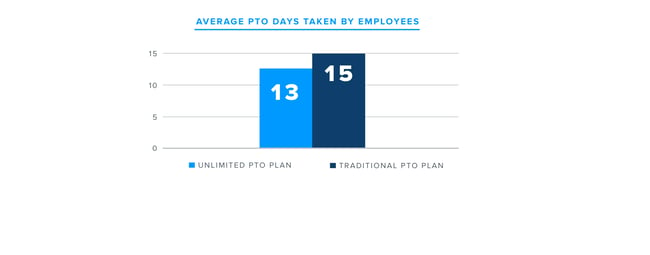
How to Implement an Effective Unlimited Vacation Policy

Unlimited paid time off (PTO) has quickly become one of the most popular benefits in the modern workplace, with companies like Glassdoor, Dropbox, and General Electric getting lots of attention around their unlimited policies.
In the ever-evolving landscape of HR, understanding the nuances and benefits of an Unlimited Vacation Policy is key for effective PTO management strategies and designing effective time off policies. So what is unlimited PTO and how can companies create a policy that maximizes the benefits for everyone? We’ll dig into the ins and outs of implementing an effective unlimited vacation policy.
What is Unlimited Vacation?
Unlimited vacation is an increasingly popular benefit among startups and high growth companies. Employees under these policies are permitted to take as much time off as they need under the expectation that their work gets done in a timely manner. At its best, the benefit gives employees more flexibility with their PTO and entrusts them to manage their own time. While the promise of unlimited vacation still dazzles many, there is also skepticism around the effectiveness of these plans.

Even as more companies adopt unlimited vacation policies, data reveals that on average employees with an unlimited PTO policy do in fact take less time off than employees with a set amount of vacation days. In a recent study, Namely found that employees with unlimited vacation plans take an average of only 13 days off per year, whereas traditional plan employees average 15 days annually. This calls for a change in the way HR teams and managers communicate about time off. Depending on how an unlimited PTO policy is put into practice, it often benefits employers more than the employees.
While unlimited PTO comes with pros and cons for both employers and employees, there is a strategic way to maximize the benefits for everyone. Follow the below best practices to ensure a successful unlimited time off policy. These policies not only relate to employee well-being and PTO but also form a significant part of HR policy design, contributing to workplace flexibility benefits.
Best Practices
Unlimited PTO works best when employers and employees keep each other in mind. This establishes a company culture that encourages both good work ethic and employee well-being. Employees shouldn’t feel like they’re sacrificing their personal life and employers shouldn’t feel like they’re being taken advantage of. The most common pitfalls occur when there’s an imbalance or tradeoff.
1. Align Policy with Core Values
Companies that have successfully implemented unlimited vacation policies are those who genuinely want to see employees take meaningful time off. If a company upholds values around employee happiness, well-being, and appreciation as a motivator for high quality work, employees will in turn value the mission and success of the company.
A successful unlimited vacation policy contributes to a culture of mutual respect, which can boost both productivity and morale. Trusting employees with the responsibility to build their own time-off schedule nurtures a culture of trust, goodwill, and mutual respect. A genuine interest in employee well-being and happiness motivates these employees to work harder.
2. Redefine Success Standards
In naturally competitive work environments, employees often feel compelled to compete with their peers for hours clocked. Employees do their best work when the company genuinely cares for them. Working long hours for the sake of proving value is not sustainable and doesn’t contribute to productivity. To avoid this pitfall, success within a company should be clearly defined by quality of work, rather than face time.
Managers and leadership teams should establish concrete goals and an open line of communications with their reports. Measuring employee value in terms of accomplishments, rather than time spent in the office, can contribute to a culture where employees feel like they deserve and can enjoy their time off. With this mindset, employees and managers alike can encourage healthy work-life balance practices.
3. Communication is Key
Company culture can help shape the boundaries of unlimited PTO, but the specifics of these boundaries are often ambiguous. Employees frequently fall into a trap of taking less time off than they deserve because they don’t know where to draw the line between acceptable and excessive. An open dialogue about expectations and needs between employer and employee can create more transparency around unlimited vacation.
Include guidelines for the policy in your employee handbook—like setting a cap on consecutive days out of office—to give employees a better sense of what is acceptable. Analyzing employee vacation trends and ensuring clear HR policy communication are pivotal in promoting work-life balance initiatives.
To encourage utilization, several companies have even supplemented their unlimited vacation policies with initiatives like mandated vacation, travel stipends, and even a monthly vacation raffle. Managers should establish best practices and work closely with employees to make sure they feel comfortable requesting time off.
4. Lead By Example
To ensure a successful PTO policy, it’s critical that managers lead by example. If direct reports see their managers taking vacation time, they will feel more comfortable to take time off, too. This example-setting should start from the C-suite and work its way throughout your organization—HR included!
Beyond practicing what you preach, demonstrate a genuine interest in employee vacations. Encourage them to share vacation photos in the company newsfeed or share highlights at team meetings. This reduces any stigma or guilt an employee may feel for taking time off. Keep an eye out for underutilized PTO and burnout in your employees, so that you can act fast to ensure you’re supporting a healthy work-life balance for all employees.
Benefits of Unlimited Vacation
Now that you have the tools to craft an unlimited vacation policy that’s destined for success, how can you be sure it’s worth it? Beyond the buzzy reputation, unlimited vacation provides several benefits for both employees and their companies. Consider these four benefits of unlimited PTO as you work to gain leadership buy in and company-wide support.
1. Performance
It doesn’t take long for employees to feel the burnout associated with underutilized PTO. Looking at trends in employee vacation and performance data, it’s clear that employees who are considered high performers took an average of five more vacation days per year than lower performers. This means that taking more time off actually correlates with better performance.

2. Reduce Accrued Expenses
In states where accrued vacation days are required to be paid out, unlimited vacation can provide a gray area in terms of defining how many days have indeed been “accrued.” By forfeiting more than 200 million vacation days that cannot be rolled over, American workers are giving up about $66.4 billion in lost benefits each year. When implemented successfully, an unlimited PTO policy can simultaneously help companies reduce the cost of accrued vacation time and give employees the flexibility they desire.
3. The Work Still Gets Done
High performing employees are self-starters, expert time managers, and successful at their jobs. With clear expectations and communication, there’s no reason they would jeopardize their career by using your time-off policy. In fact, one company recently let employees work just four days a week, and found that the switch increased engagement and productivity. Don’t be afraid that work will be left unfinished if employees are entitled to a more flexible PTO policy.
4. Attract and Retain Top Talent
With its growing popularity, an unlimited vacation policy can give you a leg up in bringing on top candidates during recruiting. If your policy is generous and effective, it won’t take long for word to spread and help boost your employer brand and reputation among potential job applicants.
One of HR’s core responsibilities is to ensure that employees are engaged and productive. Encourage both managers and employees to embrace the role vacation plays in building better workplaces to maximize the positive effects of an unlimited PTO policy.

See how Namely's flexible solution will help you streamline your HR processes by having your people, payroll, and benefits info all in on place.
Get a demoYou May Also Like
Get the latest news from Namely about HR, Payroll, and Benefits.
Thanks for subscribing!


Get the latest news from Namely about HR, Payroll, and Benefits.
Thanks for subscribing!



